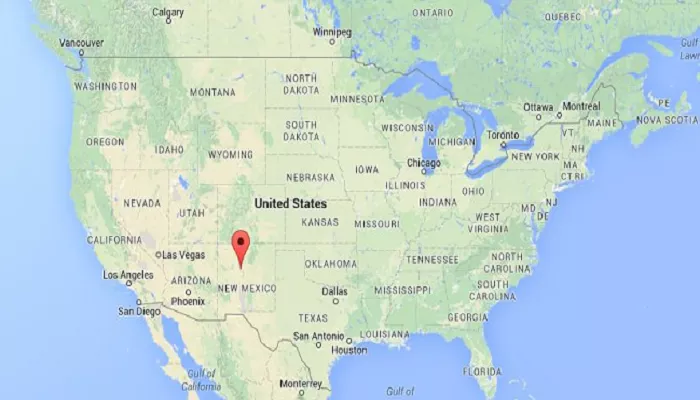Albuquerque, New Mexico, is a vibrant city known for its rich cultural heritage, stunning landscapes, and unique Southwestern charm. As the largest city in New Mexico, Albuquerque serves as the state’s cultural and economic hub. But where exactly is Albuquerque located on the map? In this article, we’ll explore Albuquerque’s geographic location, its position within New Mexico and the United States, and its significance as a regional center. Whether you’re planning a visit or simply curious about this iconic city, this guide will provide all the details you need.
Albuquerque’s Location in New Mexico
Albuquerque is located in the central part of New Mexico, approximately 60 miles (97 kilometers) southwest of Santa Fe, the state capital. It is the most populous city in New Mexico and serves as the county seat of Bernalillo County. The city lies in the Rio Grande Valley, surrounded by the Sandia Mountains to the east and the West Mesa to the west.
To find Albuquerque on a map of New Mexico, look for the central region of the state. The city is situated along the Rio Grande, one of the longest rivers in North America, which flows from Colorado to the Gulf of Mexico. Albuquerque’s location in the high desert provides stunning views of the surrounding mountains and mesas.
Accessibility and Transportation
Albuquerque’s central location makes it a significant transportation hub in the region. The city is intersected by two major interstate highways:
- Interstate 25 (I-25): Runs north-south, connecting Albuquerque to cities like Santa Fe to the north and Las Cruces to the south.
- Interstate 40 (I-40): Runs east-west, linking Albuquerque to cities such as Amarillo, Texas, to the east and Flagstaff, Arizona, to the west.
Additionally, the historic U.S. Route 66 passes through Albuquerque, reflecting the city’s rich transportation history. The city is also served by the Albuquerque International Sunport, the largest commercial airport in New Mexico, offering flights to various destinations across the United States.
Albuquerque’s Historical and Cultural Significance
Albuquerque’s location has played a significant role in its history and development. Here are some key points:
1. Native American Heritage
Albuquerque has a rich Native American heritage, with the Pueblo peoples having lived in the area for thousands of years. The city’s name, Albuquerque, is derived from the Spanish Duke of Alburquerque, though the first “r” was later dropped.
2. Spanish Colonial Era
Albuquerque was founded in 1706 as a Spanish colonial outpost. The city’s historic Old Town district, with its adobe buildings and central plaza, is a testament to this era. Old Town is home to the San Felipe de Neri Church, one of the oldest buildings in the city.
3. American Expansion
Albuquerque became part of the United States in 1846 during the Mexican-American War. The city grew rapidly with the arrival of the Atchison, Topeka, and Santa Fe Railway in 1880, which made Albuquerque a major transportation hub.
4. Modern Albuquerque
Today, Albuquerque is a vibrant city known for its cultural diversity, arts scene, and outdoor recreation. The city is home to the University of New Mexico, which contributes to its lively atmosphere and intellectual community.
Climate
Albuquerque experiences a high-desert climate characterized by sunny days and low humidity. The city enjoys approximately 310 days of sunshine per year, with four distinct seasons:
- Spring: Mild temperatures with occasional wind.
- Summer: Hot days with cooler evenings; average highs around 90°F (32°C).
- Fall: Pleasant temperatures and clear skies.
- Winter: Cool temperatures with occasional snowfall; average highs around 50°F (10°C).
Cultural and Recreational Highlights
Albuquerque offers a variety of cultural and recreational activities:
- International Balloon Fiesta: An annual event held every October, attracting hot air balloon enthusiasts from around the world.
- Sandia Peak Tramway: One of the world’s longest aerial tramways, providing panoramic views of the city and surrounding mountains.
- Petroglyph National Monument: Home to thousands of ancient rock carvings created by Native Americans and early Spanish settlers.
Understanding Albuquerque’s location on the map reveals its significance as a cultural crossroads and a hub of natural beauty in the American Southwest.
Things to Do in Albuquerque
Albuquerque offers a variety of attractions and activities for visitors. Here are some highlights:
- Old Town Albuquerque: Explore the historic district with its adobe buildings, shops, and restaurants.
- Sandia Peak Tramway: Take a ride on the tramway for stunning views of the city and surrounding landscapes.
- Petroglyph National Monument: Discover ancient rock carvings and hike through the rugged West Mesa.
- Albuquerque International Balloon Fiesta: Attend the world’s largest hot air balloon festival, held every October.
- Indian Pueblo Cultural Center: Learn about the history and culture of New Mexico’s Pueblo peoples.
Conclusion
Albuquerque, New Mexico, is a vibrant and culturally rich city located in the heart of the high desert. Its unique location, surrounded by mountains and mesas, makes it a stunning destination for outdoor enthusiasts and history buffs alike. Whether you’re exploring the historic Old Town, riding the Sandia Peak Tramway, or attending the Balloon Fiesta, Albuquerque offers something for everyone.
Next time you look at a map of New Mexico, you’ll know exactly where to find this iconic city. From its geographic coordinates to its cultural landmarks, Albuquerque is a fascinating destination that captures the spirit of the American Southwest.

